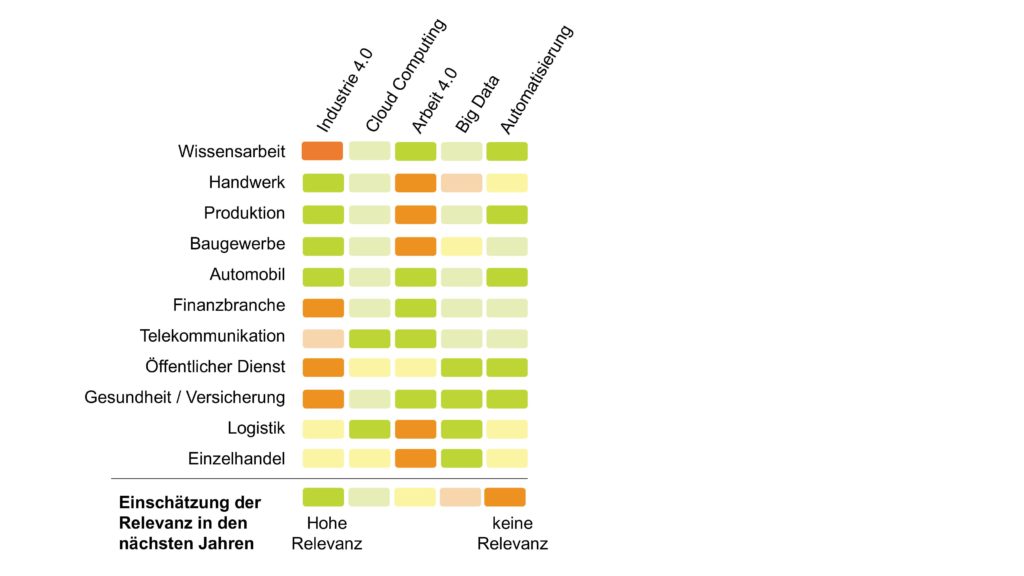Digitization can now be found everywhere and is spreading like wildfire.
I am therefore now writing a whole series of articles on the subject of digitization. My motivation behind this is that digitization means something different for every industry and type of company and I want to work out these differences. An illustration of the differences in different industries can be found in the following figure.

In this section I would like to go into the real gist of this article and illustrate digitization in the telecommunications industry.
Industry characteristics
The telecommunications sector is defined by fixed and mobile networks as well as internet access services and the provision of radio signals.
Nevertheless: Despite smartphones and the like, the actual use of the phone for making calls is steadily decreasing. But classic products such as broadband connections are also showing falling growth rates. Instead, customers are increasingly relying on a digital Voice-over-IP data stream by having their connection switched to IP telephony. Classic contracts and services within the telecommunications industry must increasingly be converted to new business models in the area of the Internet of Things (IoT).
This means that the industry can no longer rely solely on tried and tested channels. Instead, it must offer its customers cloud-based services that make all the benefits of the Internet accessible. The telecommunications industry has long been considered a pioneer in the field of digitization. Increasingly, however, it had to admit defeat to strong competition from Internet companies such as Amazon or Facebook. Agile methods based on improved communication and flat hierarchies have also been introduced, but have long been neglected, especially in the area of customer service. In the battle for customers, however, agile methods, cloud computing and work 4.0 are increasingly being used. They should make internal processes and communication more flexible and tailor them to the customer.
The current digitization in the telecommunications industry
In the telecommunications industry in particular, digitization has already had a major impact. Thanks to smartphones, tablets and the like, services in this sector can now be used anywhere and anytime. In addition, they are often in direct contact with online-based links such as apps or clouds. In the past, classic telecommunications services have also been expanded to include technological innovations. For example video telephony, IPTV, video on demand or music streaming. Nevertheless, they are still lagging behind what Internet service providers have to offer. Because so far customers have been provided with an expanded product range thanks to digitization in this industry, but this is still heavily dependent on the telecommunications provider. Services often have to be laboriously booked instead of being implemented with one click. This makes the telecommunications industry still less flexible than internet companies, despite strong digitization.
But digitization has also found its way into customer service, for example in the form of the option to conclude a contract online or to exchange information via chat bots.
Advantages of digitization in the telecommunications industry
Increasing digitization offers the telecommunications industry great opportunities to better serve customers in the future. More agile communication with customers and new, technology-based business models should make information available to customers at any time and anywhere. In the area of IT for customer services in particular, digitization will increasingly take hold in order to sustainably promote new systems such as customer journey management. Thanks to agility and technological innovations, the customer can therefore be accompanied from need to purchase and subsequent use from every phase and throughout the entire process. On the basis of this development, existing customers can be retained better in the future and new customers can be acquired.
Tip:
If you are as excited about this topic as I am, then you can find the entire article series here !
Image source: pixabay.com
[fotolia]


